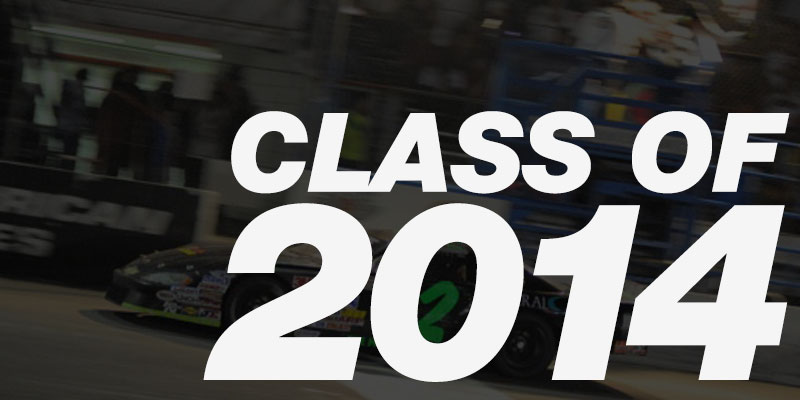
Blu Plemons
Blu was born in Amarillo, Texas in 1927. He lived in Amarillo until his father died in 1939, after which his mother decided to pack up and move the family to Denver to begin a new life. When Blu was about 11, he began sneaking into Lakeside Speedway through a hole in the fence that he had made by removing nails in the bottom of the board and then bending the board out and then back in after he slipped through the hole. Once inside, he would watch the Midget cars race and got hooked on racing. From then on he couldn’t wait until he was sitting behind the wheel of a race car and in the summer of 1946 he got his chance.
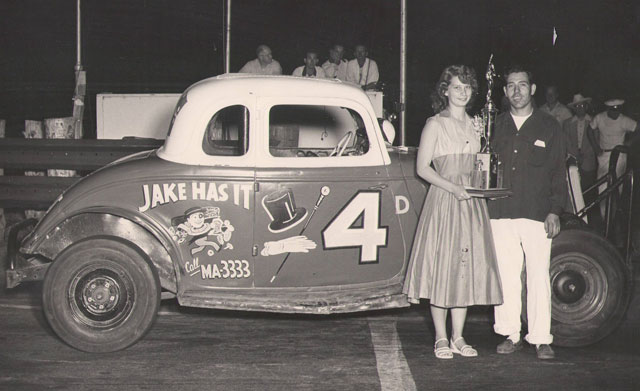 He started by working on Harry Conklin’s pit crew, and that is where he met Keith Andrews, who drove Harry’s Midget. When Keith decided to move on and drive for someone else, Keith asked Blu to be part of his pit crew, which Blu accepted. That was the beginning of a long friendship that lasted until Keith’s untimely death at Indianapolis Speedway in 1957.
He started by working on Harry Conklin’s pit crew, and that is where he met Keith Andrews, who drove Harry’s Midget. When Keith decided to move on and drive for someone else, Keith asked Blu to be part of his pit crew, which Blu accepted. That was the beginning of a long friendship that lasted until Keith’s untimely death at Indianapolis Speedway in 1957.
Blu started his racing career at Englewood Speedway in 1954 and went on the race at most of the tracks in Colorado and Wyoming, where he raced with greats like Bobby and Al Unser Sr. Then in the fall of 1954, Keith Andrews asked him to be his co-pilot in one of the most grueling and challenging races anywhere – the La Carrera Pan Americana. This race would cover over 1,900 miles in five days from Tuxtla to Juarez, Mexico.
Keith started by putting together a pit crew of friends that would challenge the best money could buy. So it was Keith, Blu, Wilson Mclure, Luther Baughman, Bill Weiher and Al Rogers against some of the best drivers with millions of dollars in sponsorship money that they were going to try and beat. The cars started one minute apart at each leg of the race and were only allowed one hour at the end of each leg to work on their cars. As co-pilot it was Blu’s job to make sure that they stayed on coarse and to alert Keith as to which was the road turned and he did this with a map that Al Rogers had made up for them. After five days, 1908 miles, being run off the road, stopped by a train that should not have been there, they rolled across the finish line in third place. This was a huge accomplishment by any standards! They were paid for finishing third but never received their trophy or the Mexican 20 dollar gold piece they were told came with third place.
Blu retired in 1978, after his good friend Sam Sauer was killed driving a Midget at Colorado National Speedway. During the 32 years he raced, he received 3 or 4 perfect attendance awards, best looking pit crew and in 1972 he won the Modified Season Championship at Lakeside Speedway. Blu drove Stock Cars, Midgets and Modifieds throughout his career and he drove for Harry Conklin, Doug Plu, Bert Jones, Tom Burton, Gene Plu, Elmer Sauer, Barney Manley, Don Clark and Dick Ducate. Although Blu is retired from racing, he still loves going to as many races as he can and he loves watching and helping his grandson Todd and great-grandson Michael when they race their Sprint Car and Midget. To this day, no matter where he goes he runs into people who remember him from “the good old days of racing.
Bruce Yackey
Bruce “The Moose” Yackey was born in Greeley, Colorado in 1966.
 After football season ended during Bruce’s high school senior year, he and his Uncle, Bob, built his first race car, a Chevrolet Vega, to run in the Mini-Stock class in 1984 at Big Country Speedway.
After football season ended during Bruce’s high school senior year, he and his Uncle, Bob, built his first race car, a Chevrolet Vega, to run in the Mini-Stock class in 1984 at Big Country Speedway.
His first laps on the track were qualifying laps. By mid-season of his rookie year Bruce was becoming competitive and his first main event win was the last night of the 1984 season. He then went on to win the 1985, 1986 and 1987 Mini-Stock Season Championships at Big Country Speedway. Bruce also won regularly while competing in the Mini-Stock division in Gering, Nebraska.
In 1988, Bruce moved to the Street-Stock division at Big Country Speedway and immediately won the 1988 Street-Stock Season Championship. He also competed in his first Late Model race during the season ending event in Cheyenne, Wyoming.
During this time, Bruce also competed in Enduro races in Wyoming and Colorado. As a matter of fact, he won the last Enduro event on the dirt at Colorado National Speedway while competing against more than 200 cars on the track
In 1989, Bruce competed in the Sportsman division at Colorado National Speedway. During that season, he finished first or second in every race he completed in on his way to the 1989 Sportsman Season Championship.
He moved up to the Late Model division at Colorado National Speedway in 1990. In 1991, he also raced the inaugural ARTGO race in Colorado. He also began traveling to races in Illinois, Iowa, Minnesota, Kansas, Missouri and Wisconsin. It is during this time that Bruce’s long-time sponsor, General Air Service and Supply, joined the program.
In 1992, Bruce raced with the NASCAR Southwest Series at Colorado National and he traveled to races in Arizona, California, Nevada, New Mexico, and Utah.
1993 was a breakthrough year as Bruce won his first regular season main event in the Late Model division and the season ending Challenge Cup XIX against many out of state drivers and future NASCAR stars. He then went on to win the 1996 Late Model division championship and place 2nd in the NASCAR Great West Region during that year and then in 1997 he not only won the Late Model division championship, but he claimed his first-ever NASCAR Great West Region title.
1999 was highlighted by his NASCAR Southwest Series Colorado 125 feature win at Colorado National Speedway. Bruce continued to race throughout the U.S., winning races with the USLMA series in Arizona, Colorado, Nebraska, and New Mexico, competing in Enduro races, driving in a competition truck pull, winning road course races at the Fort Collins Airport and Mountain View Motorsports Park, and winning the Frontier Classic in Cheyenne, Wyoming.
He also won the 2001, 2005, 2008, 2009, 2012 and 2013 Late Model Season Championships at Colorado National Speedway.
During the 2006 season, Bruce competed at Colorado National Speedway for the Late Model title and raced the entire NASCAR Midwest Tour schedule at tracks in Arizona, California, Colorado, Minnesota, Wisconsin, Tennessee, and South Carolina.
In 2007, under a new NASCAR structure, Bruce was the first ever Colorado NASCAR State Champion. He won additional NASCAR State Championships in 2008, 2009, 2012, and 2013.
During his career, he was named “Circle Track Driver of the Year” by the Rocky Mountain News, “Driver of the Year” by the Greeley Tribune and “Overall Sportsman of the Year” at Colorado National Speedway.
Bruce met his wife, Christi, at the Cheyenne track, where her father, Butch Bailey was a competing driver. They have three children; Brian, Brett, and Heather.
Gene Pastor
Gene Pastor has dedicated his life to automobiles and automobile racing. Born in 1936, Pastor grew up in north Denver. In 1946, as a 10 year old, he started attending Midget races at Lakeside Speedway. As a hobby he was very active in motorcycle and Midget auto racing.
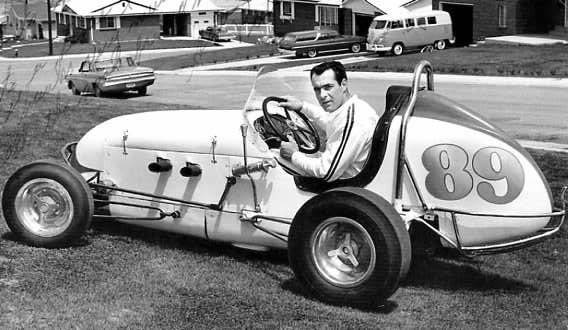 Just six short years later, Gene raced in his first Midget race in Cheyenne, Wyoming. After a few years of racing, Gene received his first break in Midget racing due to a twist of fate.
Just six short years later, Gene raced in his first Midget race in Cheyenne, Wyoming. After a few years of racing, Gene received his first break in Midget racing due to a twist of fate.
Don Malone, a friend of Gene’s, was killed at the Arapahoe Fairgrounds in 1955 driving for Earl Kouba. Earl rebuilt the car, with the help from Gene. As a payment for his help, Earl in turn gave a Midget, less the engine to Gene.
The Midget was an old Norberg chassis, and after restoring the car, Gene added a V8-60 engine. In the later part of the 1956 racing season the rebuilt machine debuted with Gene behind the wheel.
1957 became a turning point for the 20-year-old, as he was hired to drive for Warren Hamilton in one of Warren’s new Offy Midgets build by Vic Felt. Gene won his first Midget race at Lakeside Speedway driving for Warren. Later that year Gene raced for Curt Stockwell, after his driver was injured in a crash. Gene and Curt got along so well they raced together for more than six years.
Gene than had one of his best seasons in Midget racing in 1958, as he scored a victory in the Willy Hardman’s V8-60 at Kremmling, Colorado. In the final 1958 Rocky Mountain Midget Racing Association standings, Gene finished in 6th place, equaling his best season finish.
1958 also saw Pastor race for Ed Silk out of Texas. His season ended on a sour note as he suffered the worst crash of his racing career. After the crash, Curt purchased the Bob Pankratz built #31 from Sid Blanford and Gene drove that Offy for many years. Gene also drove for Jack Kline and Dean Dungan.
Gene scored his signature victory in 1968 at Lakeside Speedway. There he beat many storied drivers, including Indy and Midget veteran Arnie Knepper to win the United States Auto Club Feature. He finished in 8th place in the 1969 RMMRA standings. He also finished in 7th place in the final season standings in the Big Car Racing Association that same year.
Gene drove Midgets, Sprint Cars and Big Cars for several owners, including Earl Kouba, Warren Hamilton, Curt Stockwell, Willy Hardman, Sid Blanford, Bob James, Ed Silk, Jack Kline, Tom Bentz, Dean Dugan, Bob Lively, Chuck Jameson, Dave Claussen, Bob Olds, Dennis Giulliam and the Schleiger Brothers.
Gene retired from racing as a drive in 1979 with more than 14 feature wins and many top 10 finishes. He then went on to serve as a flagman at the Belleville Midget Nationals and has served as an official for the RMMRA for several years. He was a member of the RMMRA Board of Directors from 1991 through 2009. He has also served as an official for the American Independent Midget Series, Southwest Midget Series and Professional Open Wheel Incorporated. Gene still has a prominent roll with the vintage race car scene, restoring cars and also participating in events. Recently, Pastor flagged the Big KAR Bill Hall Memorial races at 81 Speedway in Wichita, Kansas.
Kelly Boen
Kelly Boen was born in 1963 in North Dakota. In 1967, his parents, Harlan and Sharrell, moved their family to Colorado. Kelly’s dad soon began racing Figure-8s at Englewood Speedway. While his dad competed, Kelly made friends at the track, pitted for buddies and learned some mechanical lessons along the way. His dream to go racing was coming together, but it nearly never came to be.
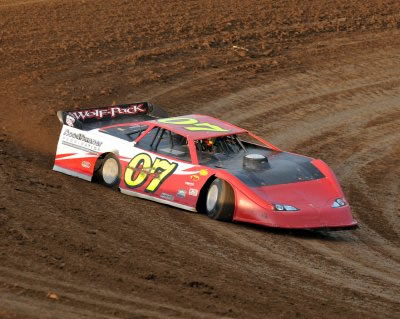 At the age of 12, Kelly was hit by a car. He nearly died. He spent the entire summer in the hospital, slowly healing, thankful to be alive. After coming home, he spent the next couple of years pitting on a car for Frank Marcello.
At the age of 12, Kelly was hit by a car. He nearly died. He spent the entire summer in the hospital, slowly healing, thankful to be alive. After coming home, he spent the next couple of years pitting on a car for Frank Marcello.
At 17, Kelly took his welding skills and went to work for the Fruehauf Trailer Company. That job refined his techniques. With the means to go racing in 1980, Kelly dug an El Camino frame out of the local wrecking yard, turned it into a racing chassis, and the finished product was a ’68 Chevelle #07 to be campaigned in the Sportsman division at Colorado National Speedway.
Kelly ran full-time at CNS, racing and wrenching with the help of high school buddy Doug Hoffman. They managed to keep the car on track and be reasonably competitive. However, victory eluded them until he collected his first win in 1983.
In 1985, Kelly created RoadRunner Fabrication. His welding-based company was doing well, so when CNS converted from dirt to asphalt in 1988, he was prepared to step up in class and competition. He ran an IMCA Modified at Fort Morgan Speedway and Rocky Mountain National Speedway.
From 1989 through 1999, Kelly won 76 IMCA-sanctioned feature races. He tied for the IMCA National Points title twice, was Champion of IMCA’s Mountain Region in 1996 and 1997, and was a three-time Track Champion at Rocky Mountain National Speedway from 1995-1997. In 1996, Kelly “showed up” at Boone, Iowa for the IMCA Super Nationals, and promptly won both the “Harris Auto Racing” Race of Champions and the A-feature (a feat accomplished by only one other modified racer).
During the 1990s, Kelly was also able to race locally at Rocky Mountain National Speedway, and on a national level, Kelly would tote both cars to competitions. One series that afforded the opportunity to race either on a given night was the National Championship Racing Association. The NCRA had annual stops on the holiday weekends at a little track in the sleepy town of Belleville, Kansas. Kelly stopped in for his first race in 1999, and tried out the Modified with little success.
He can back a year later and began his assault on the records on the high banks of Belleville in an NCRA Late Model. Kelly won his first race at Belleville in 2000 against the best NCRA drivers at that time. From then on, Kelly would make Belleville his second home. He took three out of four races in 2002 and 2005, two out of three in 2006, and lapped all but the runner-up in the 2007 Labor Day finale on the Belleville High Banks.
Then in 2008, Kelly scored his first World of Outlaws Late Model win on the Belleville High Banks. Kelly has won three of his final four events at Belleville. His winning percentage in a Late Model is just under 50 percent at Belleville. His 14 feature wins place him as the all-time leader in wins on the Belleville High Banks. Series that he has won in include the Midwest Latemodel Racing Association, National Championship Racing Association, TORA Racing Series, World Dirt Racing Association, World Dirt Racing League and the World of Outlaws Late Model series.
Keith Rauch
Keith Rauch was born in 1969 in Phoenix, Arizona. His racing career began at the age of 4 1/2 when his father, Ed, purchased his first Quarter Midget. Keith raced Quarter Midgets until he turned 14, running locally at South Mountain Speedway and travelling to national events. During this time, he notched more than 300 main event wins in several different classes, with his most memorable wins at the Las Vegas Championship and the California Indoor Championship in Sacramento.
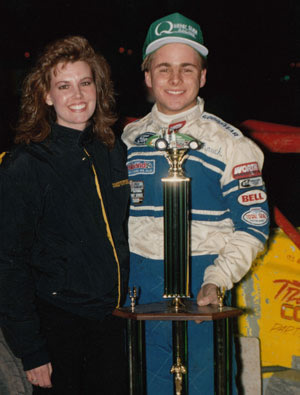 At the age of 15, Keith started racing Micro Midgets with much success, and at the age of 16, he moved up to the larger engine class, winning many races including the 75-lap Arizona Championship Race.
At the age of 15, Keith started racing Micro Midgets with much success, and at the age of 16, he moved up to the larger engine class, winning many races including the 75-lap Arizona Championship Race.
Keith’s next career move was to full size Midgets in his dad’s Cosworth. One of his biggest highlights was winning the Hank Arnold Memorial Race driving for his dad. Later, Keith raced in the Western World Championships, driving for the legendary Wayne Weiler. They made the feature, but mechanical issues forced them out. However, his efforts didn’t go unnoticed as Denver’s Tony Finley was there and approached Keith about coming to Denver to drive his Midget.
During his first year with Finley, Keith won two features, including his first Rocky Mountain Midget Racing Association main event win in 1990. He also finished 4th in the RMMRA season point standings that year.
The spring of 1991 presented one of Keith’s career highlights when he received a call from Parnelli Jones to drive his son’s, P.J., car for the first televised ESPN Thursday Night Thunder Race in Ventura, California. P.J. had a prior commitment, so Keith flew out to California and won the feature. Keith continued to race the Thursday Night Thunder and Saturday Night Thunder series dirt events in Ventura, California for a couple of years while driving for John McLaughlin and John Lawson. Keith raced many other tracks around the country driving for Andy Bondio, Duane Esslinger, Joe Dooling, Sean Birmingham and many others.
Keith went on to win five RMMRA Season Championships, including the 1993, 2000, 2009, 2012 and 2013 Championships.
He also won six 6 Roger Mauro Mile-Hi Classic Championships and has notched 60 career RMMRA Feature Wins, 47 second place finishes, and 71 heat race wins.
Keith’s considers his biggest accomplishment in the #77 Finley car to be in 1990 when we won the Quaker State United States Auto Club National Championship in El Centro, California.
Other significant accomplishments include: three USAC Western States feature wins at Lake Port, Calif., Ventura, Calif., and Denver, Colo.; a 3rd Place finish at a USAC national event in Lincoln, Neb.; a 4th Place USAC Western State feature win in Bakersfield, Calif.; and, a 5th place finish in the Saturday A-main feature at the 2001 Chili Bowl in Tulsa, Ok.
In Colorado, Keith raced Midgets for many great car owners over the years, including Tony Finley, Frank Peterson, Steve Peachey, Robert Hanley, Greg Schaefer, Todd Henry, Mike Minarik, Harry Conklin and Mick Dyer.
In addition to racing locally and nationally, Keith also made two separate trips to Australia to race “down under.”
In addition to Midgets, Keith ran Sprint Cars at Rocky Mountain National Speedway in Denver and numerous other tracks in Nebraska, Kansas, Iowa, South Dakota, Nevada, Arizona, Wyoming and New Mexico for Robert Hanley, Greg Schaefer, Ernie DiCroce, Bill Staub and John Schmitz. Keith’s achievements in Sprint Cars include the 1999 Rocky Mountain National Speedway Sprint Car Season Championship and 2004 ASCS Regional Championship.
Keith continues to race and is currently driving Frank Peterson’s Midget. Keith and his wife, Christy, (DiCroce) live in Thornton, Colo.
Mike Gregg
Mike Gregg began his Midget racing career in Washington in 1971. During that first year, he earned the Washington Midget Auto Racing Association’s “Rookie of the Year” award. Mike raced in Washington during the 1971 and 1972 seasons, before he jumped to the United States Auto Club Midgets in 1973, where he was named USAC “Rookie of the Year,” after finishing 6th in the USAC Season Championship.
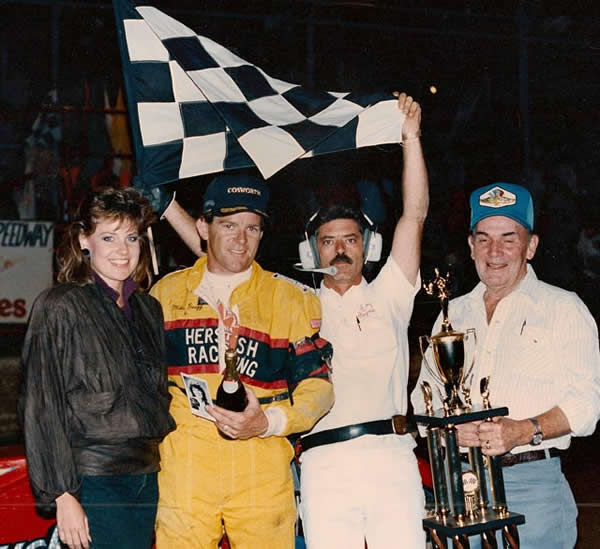 In 1974, Mike moved to Colorado and continued his Midget racing career with the Rocky Mountain Midget Racing Association. Mike scored his first RMMRA feature win in 1974 at Lakeside Speedway in the #12 Burt McMurry Sesco Midget. In 1975 Mike began the season competing in the #12 McMurry Sesco, but moved to Sprint Car racing in the Big Car Racing Association halfway through the season.
In 1974, Mike moved to Colorado and continued his Midget racing career with the Rocky Mountain Midget Racing Association. Mike scored his first RMMRA feature win in 1974 at Lakeside Speedway in the #12 Burt McMurry Sesco Midget. In 1975 Mike began the season competing in the #12 McMurry Sesco, but moved to Sprint Car racing in the Big Car Racing Association halfway through the season.
Mike’s career moved to the next level when the owners of the company for which he worked, Hank and Scot Hersh, purchased a Midget in 1977 for Mike to race. Competing in the #98 Hersh Truckers Midget, Mike made Colorado history by winning six consecutive RMMRA Season Championships. This also tied him with Ed Jackson for the most RMMRA driving titles. During these years from 1977 to 1982, Mike scored a total of 40 Colorado A-feature wins. He also won the 1981 Belleville Midget Nationals. Mike won a total of five A-feature wins at Belleville during this time period against the nation’s best Midget drivers. He also won USAC national events in Colorado in 1980 and 1981.
Mike won his seventh RMMRA Season Championship in 1984 in the #98 Hersh Truckers Midget. During that season he also won a Midget feature race at the Seattle King Dome. He had runner-up finishes in the RMMRA Season Championships in 1985 and 1986. Then, in 1987, the #98 Hersh Truckers team picked up their eighth and final RMMRA title.
Mike’s record of eight RMMRA Season Championships wasn’t eclipsed until 1999, when Randy Roberts scored his ninth RMMRA Season Championship.
In 1982, Mike became only the second driver in Colorado racing history to score championships in both the RMMRA and the RPM Sprint Car Series during the same season.
During Mike’s Colorado Midget racing career, he scored 65 career A-feature wins.
In addition to Scot and Hank Hersh, Mike’s other notable car owners include John Gregg, Roger Mauro, Del McClure, George and Gary Gamester, Dave Tyler and Terry Klatt.
Mike was inducted into the Belleville Midget Hall of Fame in 2004.
Paul Garrison
Born in Winterset, Iowa in 1938, Paul Garrison discovered his love for racing when, at age 14, he joined his crafty friends and snuck into the Des Moines track. From that evening on, Paul was hooked on motorsports.
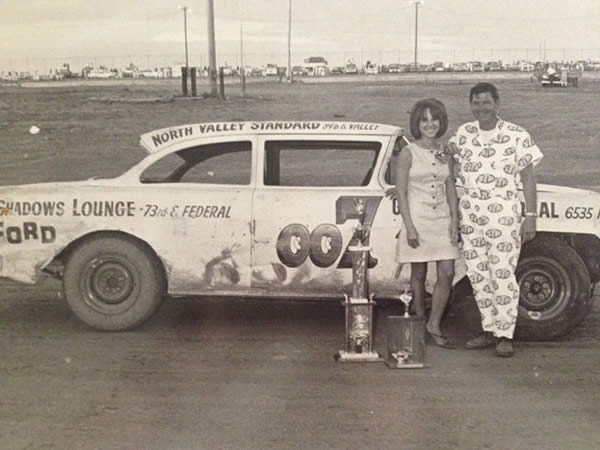 He had a short stent in drag racing while in Iowa, but with bigger plans in mind, he packed up and moved to Colorado in 1959. By 1960, Paul had joined the Bob Walton pit crew at Lakeside Speedway, igniting his lifelong love affair with circle track racing.
He had a short stent in drag racing while in Iowa, but with bigger plans in mind, he packed up and moved to Colorado in 1959. By 1960, Paul had joined the Bob Walton pit crew at Lakeside Speedway, igniting his lifelong love affair with circle track racing.
A serious industrial accident in 1962 threatened to take his life, but his strong character and determination prevailed and after months in the hospital, he found his way back to racing building cars and taking his turn behind the wheel.
In 1963, Paul took to the track at Lakeside Speedway in his first car, a 1932 Willy’s he built with Paul Krieger. After just 10 races he mastered the feel of both the car and track as he raced to what would be the first of many career wins.
He continued racing at Lakeside Speedway until 1965, when the half mile dirt track named Colorado National Speedway opened. For CNS he built a new 1957 Dodge, one of the many makes and models that Paul would run throughout his career.
He earned his first Colorado National Speedway Track Championship in 1968. That Late Model Season Championship win would be the first of three season championship for Paul. His second and third happened during the same season, as he went on to win 1980 Season Championships at both Colorado Springs International Speedway (Late Models) and Colorado National Speedway (Sportsman). During that same year, he captured the record for consecutive main event wins during a season at Colorado National Speedway, winning 11 races in a row and 13 out of 15.
From 1965 to 1988 Paul was a force to be reckoned with at Colorado Springs International Speedway and Colorado National Speedway, as Paul never fell outside of the top 10 in points when running in a full season. His winning reputation extended outside of the Colorado Front Range as he entered and won races in Victoria, BC, throughout California, throughout the mid-west, and all the way down to Florida. He also captured the Texas, Wyoming and Colorado NASCAR Tri-State Series Championship in 1981.
Racing against some of the sport’s greatest, including Fritz and Donnie Wilson, Rick Carelli, Richard Petty, AJ Foyt, Neil Bonnett, and Butch Speicher, Paul became not only known as an amazing racer but an incredible friend and knowledgeable resource to people in the industry. When Jim Opperman bought Colorado National Speedway in 1989 he asked Paul to transfer his knowledge of racing from behind the wheel to overseeing the track.
As track manager from 1989 to 2007 Paul helped build Colorado National Speedway into one of the nation’s best short track racing venues. Recognizing his sincere dedication to the sport, NASCAR presented Paul with the “National Promoters Award” and “Team Player of the Year” awards in 2007.
Also a respected car owner and talented builder, Paul has helped others win in cars that he constructed. He carries his passion forward to this day as he still builds street rods as a hobby in his garage in Brighton, Colorado.
Receiving this recognition from the Colorado Motorsports Hall of Fame is a great tribute to his career, not only because he shares it with so many of the other amazing men who have dedicated their lives to racing, but also because Paul’s son, Michael, nominated his father for the Colorado Motorsports Hall of Fame prior to his passing in 2009.
Pete Stringer
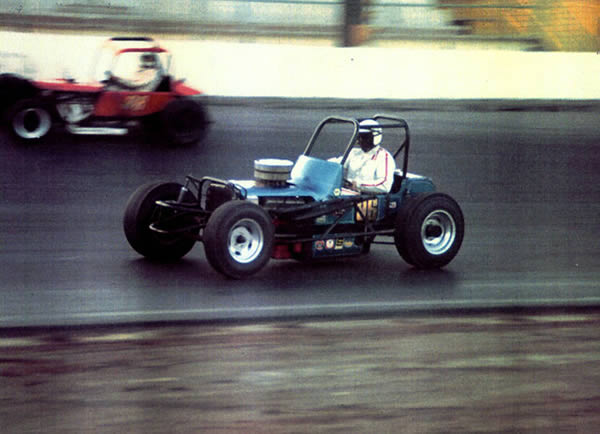 Pete Stringer’s love affair with motorsports began at a young age. It began when he turned his brother’s soap box derby car into a coupe and added the number 45. Pete’s first experience at the racetrack began at Lakeside Speedway, where his dad would take him if he tried hard in school, stayed out of trouble, listened to his mom, mowed the yard and washed his dad’s car. His dad would then take him to the races every Sunday night and wait for long hours after the races ended so Pete could hang out in the pits.
Pete Stringer’s love affair with motorsports began at a young age. It began when he turned his brother’s soap box derby car into a coupe and added the number 45. Pete’s first experience at the racetrack began at Lakeside Speedway, where his dad would take him if he tried hard in school, stayed out of trouble, listened to his mom, mowed the yard and washed his dad’s car. His dad would then take him to the races every Sunday night and wait for long hours after the races ended so Pete could hang out in the pits.
Pete began building his first car when he was in high school, with help from Joe Lehman. With the help of Joe, Pete was able to win a few races and a main event during his first season of racing.
In the early years, Pete raced on Saturday night in Colorado Springs and at Englewood Speedway on Sunday night. He also competed in Kansas. Then in 1965, Pete competed in the Metropolitan Championship between Englewood Speedway and Lakeside Speedway. The Championship consisted of two nights of racing and each speedway. Pete won three of the four nights on his way to claiming the Metropolitan Championship in his Modified.
In 1967, Pete built a car to take to the Canadian American Modified Racing Association. He raced throughout Canada, Washington, Oregon, Idaho and Utah and would up sixth in the season point standings.
Pete drove a Super Modified for John Roddy in 1969. During the season, he was racing in the Sam Gallo Benefit Race at Lakeside Speedway when he was seriously burned. The car broke a right rear hub and axle and went into the fence. At that point the rear frame also broke and punctured the full fuel tank. When the car was sliding into the infield, Pete pushed the brake pedal, but his foot got caught under the brake pedal and he couldn’t get out of the car. If it wasn’t for the Lakeside Speedway Fire Crew, Pete would have never gotten out. When he got to the hospital, they found that his helmet had melted into his hair and because he had inhaled so many fumes, the doctors told Pete he was “close to the end.” While Pete couldn’t speak for about two weeks, he survived the accident and began driving a Late Model for the Bond Brothers in late 1970.
In that car, he won Late Model Season Championships at Englewood Speedway in 1971 and 1972. He also won the 200 lap ARCA event in Winchester, Indiana in the same car during 1972.
Pete then won the Mini-Stock Season Championships at Englewood Speedway and Lakeside Speedway in 1972 and 1973 driving a Volkswagen for Tone Peconi and Vern Hagstead Motors.
He built his own Late Model in 1973 and raced at Lakeside Speedway, Englewood Speedway and Colorado Springs International Speedway. He finished second, by only five points, in the season points at Englewood Speedway that season.
Pete then drove a Sprint Car in 1975 for Doc Shaffer. He raced at Colorado National Speedway, in California and in Tampa, Florida. In Florida he won the A&W Gold Cup.
In 1977, Pete built another Late Model with a Larry Phillips chassis and won the Late Model Season Championship at Englewood Speedway. During the last season of competition at Englewood Speedway in 1979, he was leading the point standings late in the season when his throttle stuck in a main event and he totaled his car. He also broke seven bones in his left foot, four ribs on his right side and punctured a lung. Pete’s wife, Sally, passed away six years ago.
Wayne Etter
 Known as the best “Stick Shift” driver in the business during his era, Wayne began drag racing in 1962 in a 1961 Chevy, F Stock, for Larry Montreal.
Known as the best “Stick Shift” driver in the business during his era, Wayne began drag racing in 1962 in a 1961 Chevy, F Stock, for Larry Montreal.
In 1963 Wayne drove a ’58 Chevy for Dennis Maurer. Wayne went to the National Hot Rod Association’s Indianapolis Nationals and won their class. This was the year the Christmas tree debuted at the NHRA Nationals.
In 1964 Dennis Maurer came out with a ’57 Chevy convertible. It was a good year. Wayne went to the NHRA Indianapolis Nationals and won his class for the second year in a row. Wayne also won NHRA points’ meets at Wichita, Kan. and at Continental Divide Raceway in Colorado. Because the car was disqualified in Amarillo, TX for a 6” gas line, Wayne borrowed a ’58 Pontiac from Roy Oldfield and won the points’ meet anyways. Wayne finished first in the NHRA’s Division 5 points for the 1964 season. Also, at the Cheyenne, Wyoming drag strip, Wayne won a NHRA Stock Eliminator event. Wayne had to race the winners of gas, comp, and gas dragsters. Wayne won with a stocker. There was no money, just a watch and trophy. Wayne is quick to comment that he still has the watch!
In 1965 Dennis Maurer came out with a ’57 Chevy, 270hp, 2-door wagon; a ’57 Chevy 2-door, 283hp fuel-injected sedan; and a ’57 Chevy 4-door, 283hp, fuel-injected 9 passenger wagon. Wayne dominated the NHRA season with all cars.
In 1966 Wayne began driving the Hottman Chevrolet’s ’66 Chevelle for Dan Miller out of Brighton, Colo. It was a good year, but Wayne was just short of points to qualify for the NHRA World Finals.
In 1967 Dan McCrea borrowed Wayne to drive his fuel-injected ’57 Corvette at the NHRA Winter Nationals. They won their class. Wayne then became the full-time driver for Dan McCrea for the next four years. They were NHRA Division 5 points Champion, won the NHRA Winter Nationals, and set several national records. Also in 1967, Wayne was hired to drive Tak’s Toy. They went to Liberal, Kan. with both cars and set a national speed record with Tak’s Toy and won the NHRA points’ race with the ’57 Vette.
In 1968 and 1969 Wayne won a lot of local races but missed many point meets because of National Guard duties. In 1968 Wayne won the NHRA points meet at Continental Divide Raceway.
In 1970 Wayne won class at the NHRA Winter Nationals with the ’57 Vette. He was second in points.
In the mid ‘70s Wayne was back driving for Dennis Maurer in J.B. Redwines’ 1963 Dodge that Wayne won the NHRA Bracket Nationals at Bandimere. It was the first bracket race in which Wayne had raced. With the ’63 Dodge, Wayne was runner-up to Judy Lilly at the NHRA Division 5 points’ meet in Winnipeg, Canada.
In Wayne’s career, he won nine NHRA points’ meets and finished in the top 10 in the points chase for 10 years, and won the NHRA Division 5 Points Championship in ’64 and ’67.
Wayne drove for 20 years. He retired from racing, started his electrical company and in 2004 retired and moved to Cañon City, CO.
Zan Smith
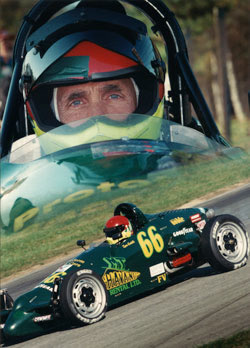 Zan attributes his being a motor head to his father. His father rode motorcycles, flew airplanes, loved cars and passed the wonderful world of “wheels” on to Zan.
Zan attributes his being a motor head to his father. His father rode motorcycles, flew airplanes, loved cars and passed the wonderful world of “wheels” on to Zan.
While in high school and college Zan had a job with a local foreign car dealership where he got to drive new vehicles from the warehouse in Fort Worth, Texas to his hometown of Lubbock, Texas. At this point, he quickly fell in love with sports cars.
Scraping up $900 to buy a 1959 Austin Healy Bugeyed Sprite, the windshield and all the extras were soon gone and numbers were on the side. After completing a driving school at Rattlesnake Raceway he was on the road to 50+ years of racing.
After completion of college, Zan moved to Colorado, and combined a teaching career with motorsports. He competed in his first race in 1967 at Continental Divide Raceway in a Lotus Super 7.
Leaving Colorado behind for a year in 1970 to move to London, England the racing continued with a new Merlyn Formula Ford. It was great, competitive racing with Formula Ford Fields of 30 to 40 cars in each race. He enjoyed the racing, especially with a large US Flag on the side of his helmet.
Upon return to Colorado, Zan competed in Formula Ford races throughout the country. While racing Formula Ford, his sponsor at the time decided to go racing himself, so he bought two Formula Vs. Both cars ended up in Zan’s garage and he told him to start racing one of them. So the era of racing both Formula Ford and Formula Vs began.
Zan was then asked to drive a brand new prototype Predator Formula V in a Sports Car Club of America national race. He did and he won. After which, a long relationship began with Darrell Baily. They built engines and race cars and sold 25 race cars, with some going as far as South Africa.
Zan was then asked by the SCCA in 1989 to become president of SCCA Enterprises to stimulate the company and continue sourcing parts and building kits for the very successful Spec Racer (Sport Renault) race car.
After two years with SCCA Enterprises (while racing Sport 2000) Zan returned to Colorado Springs and was no longer involved with Spec Racer as a profession, but began racing Spec Racers.
Around 2000 a new class, called Formula Mazda, was growing quickly in SCCA. Since Zan was always drawn to a class with large fields and tough competition this seemed to be the way to go, although he did not abandon Formula V. So it was again a two class car entry. Charlie Seffrood became his crew chief and has remained to the present. The Formula Mazda served as his race car as Zan’s racing career began to come to an end.
A couple of years ago after winning a race, Zan decided to retire from racing while on the top and in one piece.
To recap his racing career is nearly impossible. Zan amassed 21 national wins and 30 regional wins in the SCCA Formula V class, six national and 12 regional wins in the SCCA Formula Mazda class, four national and 10 regional wins in the SCCA Spec Racer class and two national and 10 regional wins in the SCCA Formula Ford Class.
He was also named “Motorcycle Rider of the Year” after competing in the Baja 7-day race, rode in the infamous Colorado 500 10 times and was named a “Pacesetter” in Sport Car Magazine.
Mark Matejka
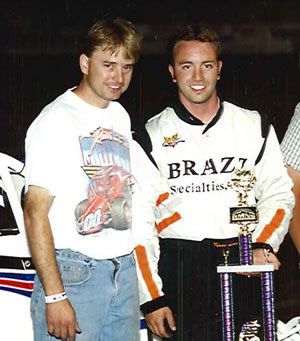 The board selected Mark Matejka to be the recipient of the 2014 Jerry Van Dyke Memorial Award, recognizing outstanding contribution to motorsports by an individual.
The board selected Mark Matejka to be the recipient of the 2014 Jerry Van Dyke Memorial Award, recognizing outstanding contribution to motorsports by an individual.
Mark began his career as a driver, mechanic and crew chief in 1985. It was his skill as a mechanic that made Mark one of the most respected men in the pits. During his career, Mark won 12 Rocky Mountain Midget Racing Association “Championship Mechanic Awards.” He won the RMMRA’s “Mechanic of the Year” award seven times and he was awarded the ASCS Rocky Mountain Region Championship Mechanic for Sprint Cars in 2005.
Drivers for which he served as chief mechanic include Randy Roberts, Dave Strickland, Greg Shaefer, Keith Rauch, Gary Taylor, Kenny Lewis, Derrick Ortega, Todd Plemons, and Bobby Seals. He won RMMRA Season Championships with Roberts, Rauch, Taylor and Lewis.
Owners for which he worked include Harry Conklin, Lynn Jacobs, Cindy Roberts and Frank Peterson.
